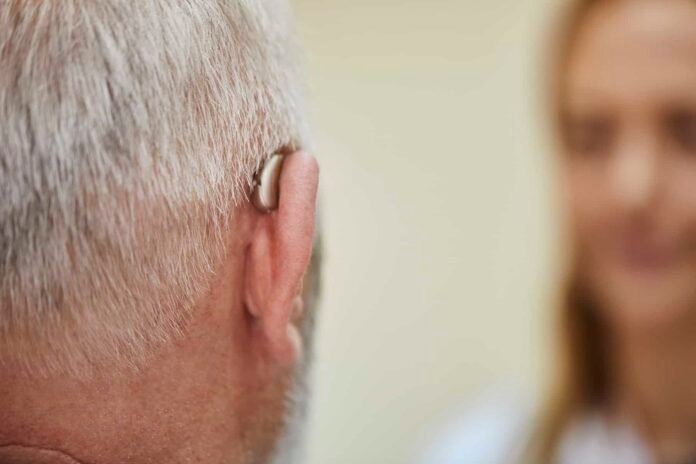Hearing problems can manifest at any stage of life, but one prevalent type is age-related hearing loss, primarily caused by the deterioration of nerves responsible for transmitting sound signals to the brain. This decline can occur gradually over time, with two other types of hearing loss also recognized.
Age-related hearing loss, also known as presbycusis, is a common condition among older adults, typically emerging as individuals age. This form of hearing loss is attributed to various factors, including exposure to loud noises over the years, genetics, and the natural aging process. As people grow older, the delicate structures within the ear, such as the hair cells and auditory nerves, may degenerate, leading to a diminished ability to hear high-frequency sounds and speech clarity.
In addition to age-related hearing loss, other types of hearing impairments exist, including conductive and sensorineural hearing loss. Conductive hearing loss occurs when sound waves are unable to travel efficiently through the outer or middle ear, often due to blockages caused by earwax buildup, fluid accumulation, or structural abnormalities. Sensorineural hearing loss, on the other hand, results from damage to the inner ear or auditory nerve, impairing the brain’s ability to process sound signals effectively.
Recognizing the symptoms of hearing loss is crucial for early intervention and treatment. Common signs of hearing impairment include difficulty understanding speech, frequently asking others to repeat themselves, turning up the volume on electronic devices, and experiencing ringing or buzzing sensations in the ears, known as tinnitus.
Fortunately, advancements in audiology and hearing technology have led to various treatment options for individuals with hearing loss. Hearing aids, for instance, are sophisticated devices designed to amplify sounds and improve auditory perception. Cochlear implants, another form of treatment, bypass damaged parts of the inner ear and directly stimulate the auditory nerve, providing individuals with severe hearing loss the opportunity to regain auditory function.
While treatment options are available, prevention remains key in preserving hearing health. Adopting healthy lifestyle habits, such as avoiding exposure to loud noises, using protective earplugs in noisy environments, and practicing proper ear hygiene, can significantly reduce the risk of developing hearing problems later in life. Regular hearing screenings and check-ups with an audiologist are also essential for early detection of any potential issues and prompt intervention.
Hearing problems can have a profound impact on an individual’s quality of life, affecting various aspects of communication, social interaction, and emotional well-being. As such, addressing hearing loss promptly and effectively is crucial for maintaining overall health and well-being.
In addition to age-related hearing loss, other factors can contribute to hearing impairment, including exposure to loud noises, ototoxic medications, genetic predisposition, and certain medical conditions such as diabetes and cardiovascular disease. Identifying and addressing these underlying causes is essential for developing personalized treatment plans and managing hearing loss effectively.
When it comes to treatment, early intervention is key. Seeking assistance from an audiologist or hearing healthcare professional at the first sign of hearing difficulty can lead to better outcomes. Hearing aids, which come in various styles and technologies, are commonly prescribed to individuals with mild to moderate hearing loss. These devices work by amplifying sounds and improving speech understanding, thereby enhancing communication and overall auditory function.
For individuals with more severe hearing loss or those who do not benefit from hearing aids, cochlear implants may be recommended. These surgically implanted devices stimulate the auditory nerve directly, bypassing damaged parts of the inner ear and providing individuals with profound hearing loss the opportunity to regain auditory function and improve communication abilities.
In addition to conventional treatment options, emerging technologies and therapies show promise in the field of hearing healthcare. For example, bone conduction implants, which transmit sound vibrations through bone rather than air, offer an alternative solution for individuals with conductive hearing loss or single-sided deafness. Similarly, advancements in auditory brainstem implants and gene therapy hold potential for addressing more complex forms of hearing impairment in the future.
While treatment options continue to evolve, prevention remains paramount in preserving hearing health. Adopting healthy lifestyle habits, such as maintaining a balanced diet, exercising regularly, and avoiding smoking, can help protect against age-related hearing loss and other chronic health conditions. Additionally, practicing good hearing hygiene, such as limiting exposure to loud noises and wearing ear protection in noisy environments, can significantly reduce the risk of noise-induced hearing damage.
Regular hearing screenings and check-ups are essential for monitoring hearing health and detecting any changes in auditory function early on. By staying proactive about hearing care and seeking timely intervention when needed, individuals can minimize the impact of hearing loss on their daily lives and continue to engage fully in conversations, activities, and social interactions.
While hearing problems may be a common occurrence, they should not be overlooked or ignored. By understanding the causes, symptoms, treatment options, and preventive measures associated with hearing impairment, individuals can take proactive steps to protect their hearing health and maintain a high quality of life for years to come.

